Introduction
Few financial developments impact as many Americans as the annual cost-of-living adjustment (COLA) attached to the Social Security Administration (SSA) benefits, federal pensions and military pay. With the focus now on the 2026 COLA increase, millions of retirees, federal workers, military personnel and salary earners are rightly asking what the upcoming adjustment will bring. This article explores how the COLA is calculated, what projections for 2026 suggest, how different groups may be affected and what steps you can take now to stay ahead of changing income and cost patterns.
The team at fintechzoom.blog has gathered the latest inflation data, expert forecasts and official processes to help you understand and plan around the 2026 adjustment. Whether you rely on Social Security, are negotiating salary increases or are part of the federal workforce, this guide will walk you through what lies ahead — in language you can actually understand, rather than financial jargon.

What Is a COLA and How It’s Calculated
A Cost of Living Adjustment (COLA) is an automatic increase applied to certain benefit payments, designed to keep pace with inflation and preserve purchasing power. For Social Security and most federal programs, COLA depends on the change in the Consumer Price Index for Urban Wage Earners and Clerical Workers (CPI-W) during the third quarter (July-September) compared to the same months a year earlier. AARP+2The Economic Times+2
Legally, the SSA must announce the new COLA each October, based on the third-quarter CPI-W. Once the number is announced, the increase takes effect in the following January for most beneficiaries. 401kspecialistmag.com+1 Because the calculation hinges on inflation data, the timing and reliability of CPI releases matter deeply for anyone depending on these payments.
The 2025 Baseline: What Happened Last Year
In 2025 beneficiaries saw a 2.5% increase in COLA, which provided modest relief compared to higher inflation years. AARP+1 Last year’s figure sets a baseline for 2026: it shows how the inflation environment, cost pressures and economic conditions drive expectation for the next adjustment. Understanding the 2025 context helps frame why a similar or slightly higher number for 2026 still sparks wide concern — because many expenses (healthcare, housing, utilities) continue to rise faster than such modest increases.
2026 COLA Predictions: What Experts Are Saying
Most analysts and senior advocacy groups are projecting that the 2026 COLA increase will land around 2.7 % to 2.8 %. AARP+2TheStreet+2 Some earlier estimates were more conservative — for instance, one group predicted ~2.4% earlier in the year. The Senior Citizens League+1 Key factors influencing those predictions include inflation trends, housing cost escalation, changes in Medicare premiums and government economic policy (such as trade tariffs). Newsweek+1
What a 2.7–2.8% Increase Means in Dollars
To put that percentage into perspective: if the average retired‐worker benefit is around $2,006 per month, a 2.7% COLA would translate roughly to an additional $54-$55 per month, or about $650 per year. Kiplinger+1 While any increase is helpful, many observers point out that rising costs for shelter, healthcare and food may erode much of that gain — meaning real purchasing power may barely rise, or could even fall. Mitrade
How the 2026 COLA Affects Different Groups
Retirees under Social Security will see their monthly checks rise by the announced percentage, but for many that rise may be offset by higher Medicare premiums or other fixed-cost increases.
Federal retirees & military pensions are typically tied to COLA as well; thus the 2026 adjustment will influence their benefit levels and possibly cost‐of‐living allowances for service members.
Wage earners / salaries may not receive a direct “COLA” unless tied to contracts or employer policies, but the concept of a cost-of-living increase is relevant for annual raises and inflation‐based adjustments in compensation.

Inflation Rate 2026 Forecast & Its Impact on COLA
General consumer inflation forecasts for 2026 matter because the COLA calculation is tied to third‐quarter CPI‐W data. If inflation remains moderate (around 2-3%), the COLA will likely stay in that 2.7-2.8% range. But if inflation spikes due to healthcare, housing or policy shifts, the COLA could increase — assuming the CPI data reflects that. CBS News+1 On the flip side, even with a COLA bump, if inflation outpaces the increase, recipients may experience a loss in real purchasing power.
Key Factors That Could Alter the Final COLA Rate
Several elements could push the announced rate higher or lower: delays in CPI data due to government shutdowns or reporting lags. Reuters Potential changes in the calculation method (such as switching from CPI-W to a different index) are also under discussion, which could impact future COLAs significantly. Newsweek+1 Unexpected inflation drivers like sudden healthcare cost increases, tariffs or housing supply shocks may also force the COLA higher than current forecasts suggest.
What You Should Do Now (Planning Advice)
Review your household budget and identify areas where cost pressures may intensify — such as healthcare, housing or utilities. Expect a modest COLA increase (around 2.7%-2.8%) and don’t assume it will fully cover all cost increases. If you’re a federal or military pension recipient, check your benefit statements, stay alert for the SSA announcement (usually October) and plan accordingly. For salaried workers or contract earners, consider how inflation might affect your next raise or bonus and engage with your employer about cost-of-living adjustments where applicable.
Timeline & How to Stay Updated
The SSA typically announces the official COLA in late October, based on CPI data from July through September. Sources to watch include the Bureau of Labor Statistics (BLS) CPI releases, senior advocacy group forecasts and official SSA communications. Subscribing to newsletters from trusted organizations or services such as fintechzoom.blog can help you receive timely updates. Being proactive now ensures you’re not caught off guard when the new rate is revealed.

2025 vs Projected 2026 COLA
| Year | COLA Rate | Estimated Monthly Increase* | Key Context |
|---|---|---|---|
| 2025 | 2.5% | Approx. $49/month | Inflation moderate, baseline year |
| 2026 | ~2.7%-2.8% | Approx. $54-$56/month | Inflation steady but cost pressures rising |
Based on an average monthly benefit of ~$2,006.
This table gives a quick look at how the upcoming adjustment compares with last year’s and what that means in tangible terms.
Also Read: Meta AI Layoffs Explained: Inside Meta’s 600-Employee Reduction Move
Conclusion
While the 2026 COLA increase is shaping up to be slightly higher than last year’s, a raise of around 2.7%-2.8% is modest when set against the rising cost of living. Beneficiaries of Social Security, federal pensions and military benefits will see some relief, but many may still face a squeeze in real purchasing power unless inflation moderates. Make the most of this adjustment by planning ahead, understanding your finances and treating the increase as one piece of a broader strategy for financial stability. Stay alert, stay informed and use this knowledge to strengthen your financial future.
FAQ About 2026 Cola Increase
Q1: What is the estimated COLA raise for 2026?
Ans: The Social Security Administration has set the 2026 cost-of-living adjustment (COLA) at 2.8%, boosting average monthly benefits by about $56 starting January.
Q2: What is the Medicare increase for 2026?
Ans: For 2026 the standard Medicare Part B premium is projected to be around $206.50/month, up from $185 in 2025; deductibles and copayments will also rise.
Q3: Why are Americans getting $4800 from Social Security?
Ans: Some beneficiaries may receive large one-time payments (up to ≈ $4,800) due to retroactive adjustments after benefit calculations or prior-period delays by Social Security.
Q4: What will the inflation rate be in 2026?
Ans: U.S. inflation is projected to moderate, with forecast estimates placing it near 2.8% for 2026, down from higher levels in earlier years.

